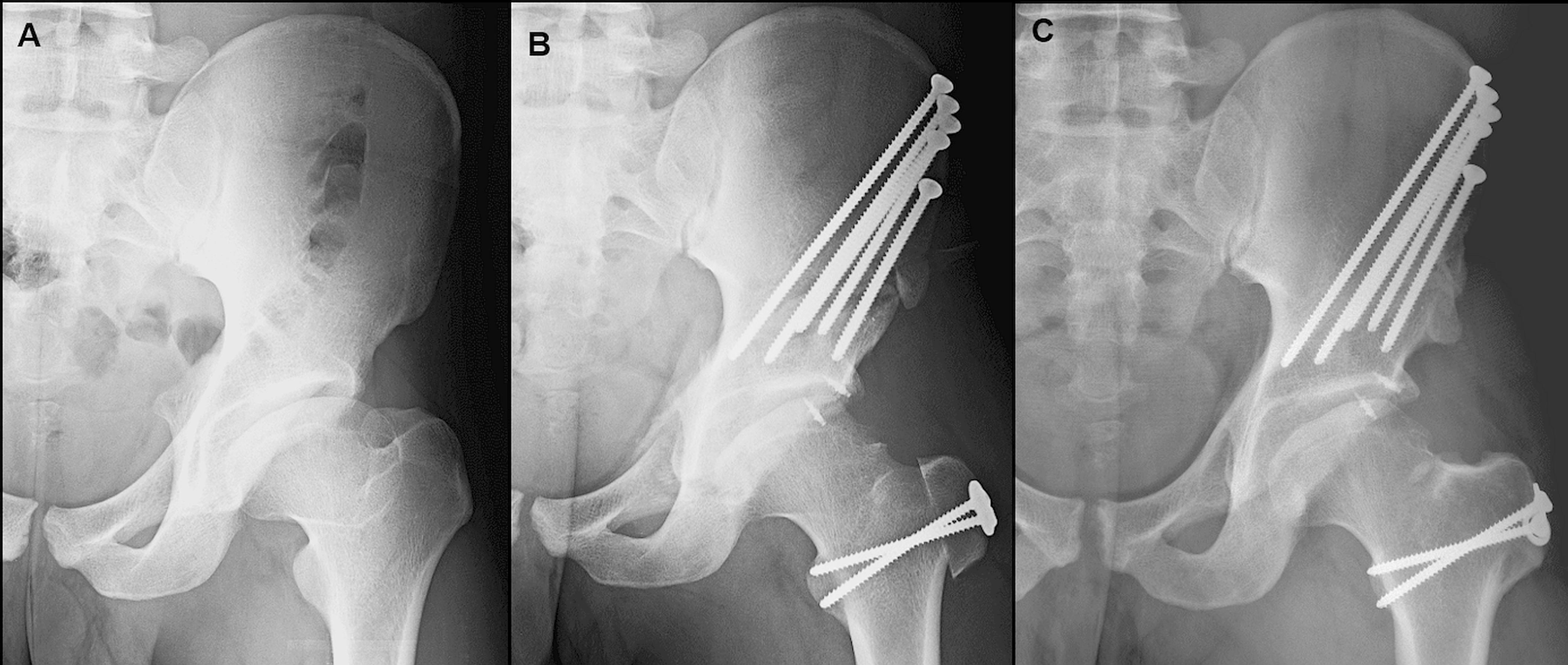Hip preservation continues to be a “hot topic.” Many deformities can be addressed surgically by normalizing hip biomechanics and preventing further degeneration. Legg-Calvé-Perthes (LCP) disease presents some of the most complex deformities in reconstructive surgery. Cases may involve both intra-articular and extra-articular impingement, sometimes with concomitant instability from dysplasia.
In the May 4, 2022 issue of JBJS, Nepple et al. report intermediate-term outcomes of combined surgical dislocation (SD) + periacetabular osteotomy (PAO) for complex residual LCP.
- This was a retrospective cohort study. Of 31 hips, 27 had a minimum follow-up of 5 years. Mean follow-up was 8.4 years (range, 5.8 to 11.7 years).
- The mean patient age was 19.8 years. 12 of the patients (44%) had previous surgical treatment of the hip.
All patients underwent femoral-head osteochondroplasty with the SD + PAO. A total of 25 hips (93%) underwent relative femoral neck lengthening, and 25 had trochanteric advancement. Intra-articular pathology (labrum, cartilage) was addressed with a variety of treatment options, including microfracture, chondroplasty, and labral repair or resection.
Intermediate-Term Outcomes
At the time of follow-up, 23 (85%) of the 27 hips remained preserved. Four (15%) of the hips had undergone total hip arthroplasty (THA) at a mean of 6.3 years. Survivorship estimates for the procedure: 93% at 5 years and 85% at 10 years.
Among the hips that survived, the authors found a significant increase in the modified Harris Hip Score. The score rose from a median of 64 preoperatively to 92 at follow-up (p < 0.001). In addition, the WOMAC pain score improved, from a median of 60 to 86 points (p = 0.001).
Two hips (7%) had major complications, including 1 deep infection. That hip underwent THA at 3 years. Another patient had a superficial infection. The authors found no nerve palsies, nonunions, fractures, or thromboembolic events.
Surgical Dislocation + PAO
Based on intermediate follow-up, the combined SD + PAO technique appears to reliably preserve hips treated for complex LCP deformities.
However, young surgeons should be cautious in interpreting the results. The senior surgeon on the paper has considerable experience with these demanding deformities, so these results should not necessarily be considered generalizable. But the study does show that hip preservation surgery can potentially address these complex cases. Hip preservation isn’t only for acetabular labral tears!
Matthew R. Schmitz, MD
JBJS Deputy Editor for Social Media
Additional reading on Legg-Calvé-Perthes disease can be found in these previous OrthoBuzz posts: For Perthes Disease, Are Two Osteotomies Better than One? and Reperfusion Patterns in Legg-Calve-Perthes Disease.




